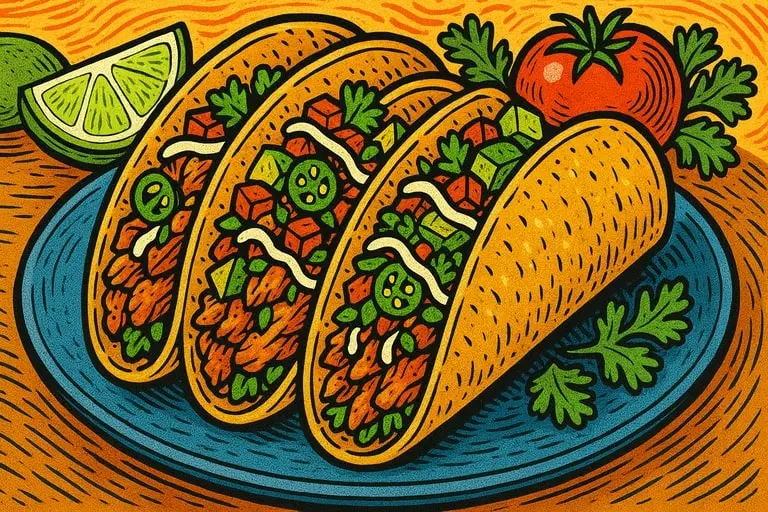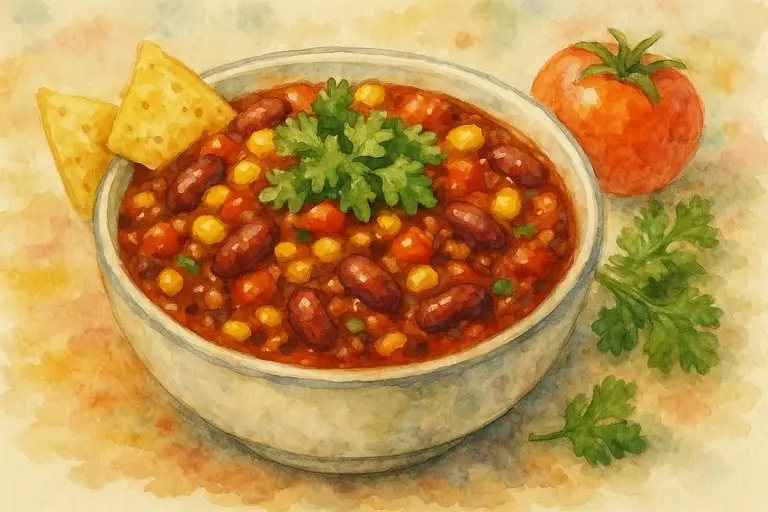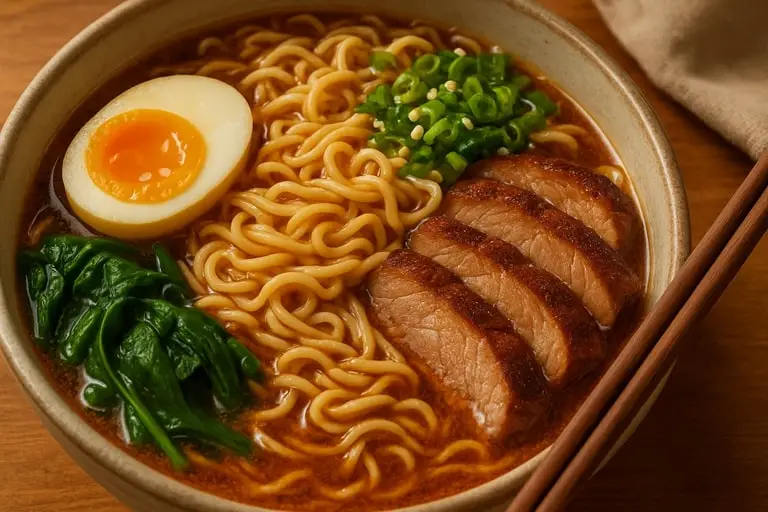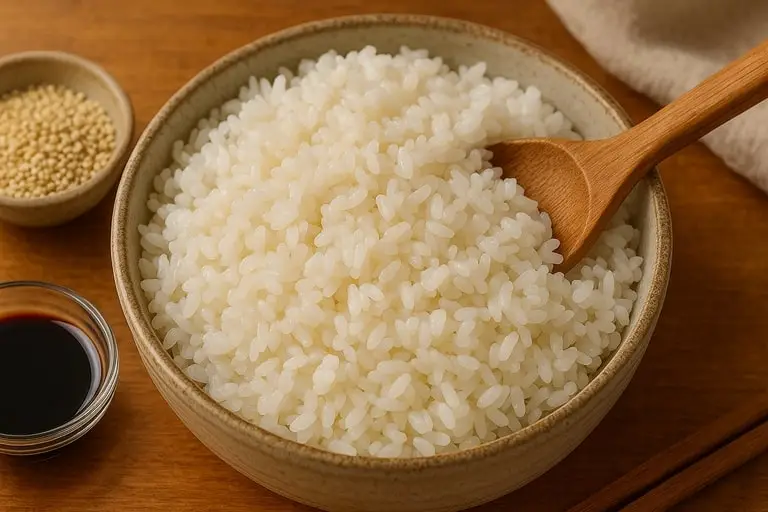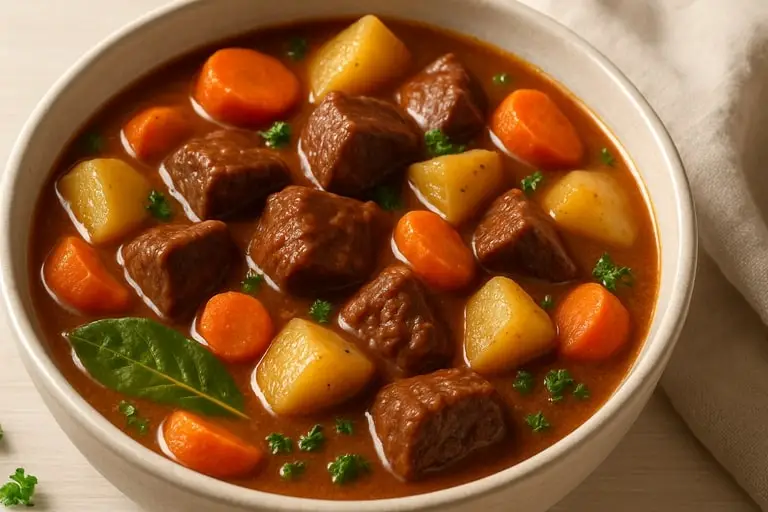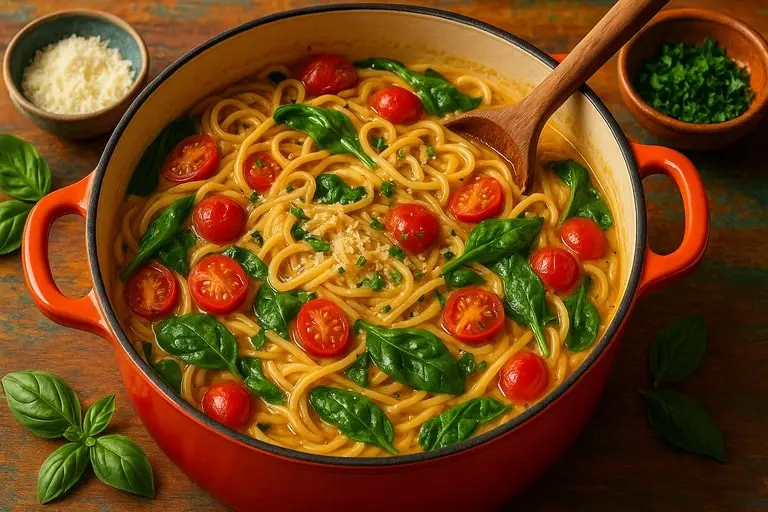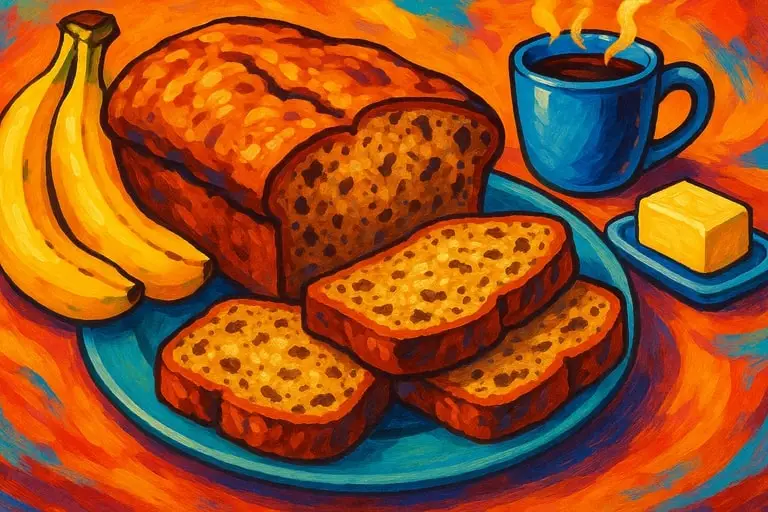Chicken tacos represent one of the most beloved expressions of Mexican cuisine, combining tender, flavorful chicken with tortillas, salsas, and fresh toppings to create a dish that is as versatile as it is satisfying. While beef and pork often dominate taco culture in certain regions, chicken tacos have earned their place by offering a lighter yet equally flavorful option that adapts beautifully to a variety of cooking methods, seasonings, and presentations. More than just a meal, chicken tacos embody heritage, community, and creativity, weaving together flavors that have evolved over centuries of cultural exchange.
The origins of tacos predate colonial times, rooted in the indigenous practice of wrapping food in corn tortillas as both vessel and nourishment. Chicken entered the tradition later, as it was introduced to the Americas during Spanish colonization. Over time, chicken tacos developed into their own category, showcasing the versatility of poultry as it absorbed the vibrant seasonings of Mexican culinary identity. Today, chicken tacos appear on tables from humble street stalls to fine dining establishments, symbolizing both tradition and adaptation.
Seasoning defines the character of chicken tacos. Marinades often blend chili peppers, garlic, lime, and spices, infusing meat with layers of heat, acidity, and depth. Regional variations emphasize different flavors: achiote-based marinades in the Yucatán yield earthy red tones, while chipotle brings smoky intensity. The chicken, whether grilled, roasted, or stewed, becomes canvas for bold flavors that reflect local traditions and individual creativity.
Tortillas form the foundation of chicken tacos, grounding them in authenticity. Corn tortillas, with their nutty aroma and chewy texture, remain traditional, symbolizing cultural heritage. Flour tortillas, more common in northern regions and abroad, offer a softer, pliable alternative. The choice of tortilla shapes not only texture but also cultural narrative, illustrating how ingredients carry meaning alongside flavor.
The toppings elevate chicken tacos into layered experiences. Fresh cilantro, diced onions, crumbled cheese, avocado, and salsas create contrasts in texture and taste. From the bright acidity of pico de gallo to the smoky complexity of salsa roja, toppings allow endless customization while preserving balance. This interplay of elements underscores Mexican culinary philosophy: harmony through contrast.
Culturally, chicken tacos reflect community and celebration. Shared at family gatherings, markets, and festivals, they represent inclusivity and connection. Street vendors serve them as quick, affordable meals, while home kitchens prepare them as centerpieces of hospitality. Their portability and adaptability ensure that chicken tacos remain deeply embedded in both everyday life and special occasions.
From a sensory perspective, chicken tacos deliver a complete experience. The aroma of seasoned chicken sizzling on the grill, the warmth of freshly pressed tortillas, the crunch of toppings, and the burst of flavor in every bite engage multiple senses at once. This multisensory quality ensures that chicken tacos are not merely food but shared experiences that linger in memory.
Nutritionally, chicken tacos offer balance. Lean protein from chicken pairs with fiber from tortillas and vitamins from vegetables, creating a meal that is both hearty and wholesome. While toppings such as cheese or crema add indulgence, lighter versions emphasize freshness and health. This adaptability allows chicken tacos to satisfy diverse dietary needs while retaining their essence.
Professional kitchens treat chicken tacos as both tradition and opportunity. Chefs respect heritage by honoring classic techniques while experimenting with global flavors—Korean-inspired tacos with gochujang, Mediterranean variations with yogurt sauces, or fusion versions with unexpected spices. This adaptability underscores the taco’s resilience as a culinary form, proving that chicken tacos remain dynamic while rooted in tradition.
Ultimately, chicken tacos symbolize balance between heritage and creativity, simplicity and depth, nourishment and pleasure. Their global popularity reflects not just their flavor but their cultural resonance as vessels of tradition, adaptability, and connection. In every tortilla filled with seasoned chicken lies a story of history, care, and artistry that continues to evolve across kitchens worldwide.
Chicken Taco Recipe and Culinary Mastery
Perfecting a chicken taco recipe requires attentiveness to detail, where each component—from marinade to tortilla—plays a role in creating harmony. While recipes vary by region, the principles of balance, seasoning, and technique remain consistent, ensuring that chicken tacos deliver both authenticity and individuality.
The chicken itself anchors the recipe. Cuts such as thighs provide moisture and depth, while breasts offer leaner texture. Marination enhances flavor, often blending citrus juice, garlic, cumin, and chilies. The acid tenderizes meat, spices penetrate fibers, and time deepens integration. Proper marination transforms chicken into centerpiece rather than backdrop.
Cooking method further defines flavor. Grilling imparts smokiness and char, evoking street food authenticity. Roasting emphasizes succulence, while stewing in sauces such as salsa verde yields tender shreds infused with flavor. Each method creates distinct character, allowing recipes to adapt to context, occasion, and preference.
The tortilla must complement the filling. Corn tortillas remain traditional for their earthy flavor, yet flour tortillas offer versatility. Warming them before assembly softens texture and releases aroma, ensuring they enhance rather than detract from the dish. This detail reflects recipe mastery, where even the simplest elements receive care.
Seasoning balance remains critical. Chilies provide heat, lime juice brings brightness, garlic and cumin add depth, and salt sharpens definition. Overemphasis on any single flavor risks imbalance. Mastery lies in calibration, ensuring chicken retains character while harmonizing with toppings and tortilla.
Toppings extend the recipe’s complexity. Fresh cilantro and onions provide brightness, avocado or guacamole add creaminess, and cheese delivers richness. Salsa functions as both condiment and partner, uniting elements into cohesive whole. Recipes that anticipate topping balance achieve harmony, ensuring no element overwhelms.
The structure of assembly further shapes experience. Layering chicken first ensures stability, while toppings add contrast and vibrancy. Attention to proportion prevents overload, maintaining integrity of each bite. This choreography transforms recipe into performance, where technique and aesthetics converge.
Professional mastery elevates chicken taco recipes through refinement. Chefs may incorporate artisanal tortillas, organic chicken, or house-made salsas, demonstrating respect for heritage while distinguishing individuality. Precision in seasoning, cooking, and presentation transforms simple tacos into expressions of culinary artistry.
Cultural context enriches recipes further. In Mexico, chicken tacos may emphasize simplicity, relying on minimal toppings to highlight meat and tortilla. Abroad, fusion interpretations expand scope, blending global flavors into tacos without erasing identity. Recipe mastery therefore requires cultural awareness as much as technical skill, respecting origins while embracing adaptation.
Modern adaptations address dietary preferences. Gluten-free tortillas, plant-based cheeses, or low-fat marinades align tacos with contemporary health goals while preserving flavor. These versions demonstrate inclusivity, proving that chicken taco recipes can remain relevant across diverse households.
Ultimately, recipe mastery for chicken tacos reflects harmony: balancing flavor, texture, tradition, and innovation. By respecting each element while fostering creativity, cooks transform a familiar dish into personal signature, ensuring that chicken tacos endure as timeless expressions of culinary care.
Chicken Tacos and Everyday Comfort
Chicken tacos resonate most deeply as everyday comfort food, embodying simplicity, versatility, and connection. Beyond their bold flavors, they serve as cultural touchstones, offering familiarity while adapting seamlessly to diverse contexts. Their role in daily life highlights how comfort food sustains both body and spirit through tradition, accessibility, and community.
In households worldwide, chicken tacos often appear as quick yet satisfying meals. Their preparation requires minimal equipment and ingredients, relying on staples such as tortillas, chicken, and fresh produce. This accessibility ensures that families can prepare them regularly, integrating comfort into routines without excessive effort.
The aroma of chicken cooking with spices defines their comfort. Whether grilled, roasted, or simmered, the fragrance fills homes with anticipation, signaling nourishment and care. This sensory element amplifies their role as comfort food, where anticipation forms part of the experience.
Chicken tacos also function as vessels of creativity in everyday life. Leftover chicken finds new purpose when shredded and seasoned, while seasonal vegetables or pantry staples become toppings. This adaptability transforms limitations into opportunity, proving that comfort often arises from resourcefulness.
Culturally, chicken tacos embody togetherness. Families assemble them at the table, customizing toppings to taste. This participatory approach fosters connection, where meals become shared experiences rather than solitary consumption. In this way, chicken tacos symbolize community, reinforcing bonds while providing nourishment.
Psychologically, chicken tacos provide reassurance. Their familiar flavors and simple preparation ground individuals during stressful times. Eating them recalls gatherings, celebrations, or street food outings, embedding comfort in memory as much as in flavor. This emotional resonance explains why tacos persist as beloved comfort food across generations.
Street food culture amplifies their role in comfort. Vendors serve chicken tacos as affordable, flavorful options, offering quick satisfaction without sacrificing quality. The informality of eating tacos by hand further contributes to comfort, embodying authenticity and accessibility.
Modern lifestyles adapt chicken tacos into diverse routines. Busy households prepare them for weeknight dinners, while gatherings feature elaborate taco bars with varied toppings. Restaurants serve gourmet versions, yet their essence as comfort food remains unchanged: approachable, flavorful, and communal.
Nutritionally, chicken tacos align with balance. Lean protein, fresh vegetables, and whole-grain tortillas create wholesome meals that comfort without excess. While indulgent versions with cheese or crema exist, lighter interpretations confirm that comfort does not require compromise.
Globally, chicken tacos resonate as symbols of cultural identity and exchange. International variations integrate local flavors—spices in India, sauces in the U.S., or Mediterranean influences abroad—while retaining their fundamental character. This adaptability ensures relevance in diverse contexts, where tacos evoke comfort through both familiarity and innovation.
Ultimately, chicken tacos embody everyday comfort by uniting accessibility, versatility, and cultural resonance. Their flavors satisfy, their preparation connects, and their adaptability sustains relevance. In kitchens, street stalls, and restaurants worldwide, chicken tacos confirm their place as timeless comfort food that nourishes both body and community.
Mexican tacos represent one of the most iconic dishes in the world, a food that is at once humble and extraordinary, deeply rooted in tradition yet endlessly adaptable to modern contexts. To speak of tacos is to speak of Mexican culture itself, a reflection of history, geography, and identity wrapped in a tortilla. Far from being a mere fast food item, tacos embody centuries of culinary evolution, shaped by indigenous practices, colonial influences, and contemporary creativity.
Their universal appeal lies in their simplicity — a tortilla, a filling, and accompaniments — yet within that structure exists infinite variety. From bustling street corners in Mexico City to fine dining restaurants in cosmopolitan cities, tacos remain a symbol of connection, community, and flavor.
The origins of tacos can be traced to ancient Mesoamerican civilizations, where maize formed the foundation of daily sustenance. Tortillas, made from nixtamalized corn, were essential to indigenous diets long before European contact.
They were portable, versatile, and deeply symbolic, serving as both utensil and vessel for food. When Spanish colonizers introduced new ingredients such as pork, beef, and cheese, the culinary landscape transformed, giving rise to the early forms of tacos we recognize today. Over centuries, regional differences and cultural exchanges enriched the dish, making it not just food but a cultural institution that speaks to Mexico’s layered history.
Central to the taco is the tortilla, whose preparation is an art in itself. Traditionally crafted from corn, the tortilla connects directly to indigenous heritage, where maize was considered sacred. The process of nixtamalization — soaking corn in an alkaline solution before grinding it into masa — not only enhances flavor but also improves nutritional value, providing essential minerals and making the grain more digestible.
Handmade tortillas, warm and pliable, provide a texture and aroma that elevate every bite. While flour tortillas also hold a place, particularly in northern Mexico, it is corn that dominates the heart of the tradition. The tortilla is more than a wrapper; it is the foundation and soul of the taco.
The fillings, of course, are where the diversity of tacos truly shines. Each region of Mexico offers its own specialties, influenced by climate, agriculture, and history. In the north, grilled meats such as carne asada define the taco, seasoned simply and charred to perfection. Coastal areas highlight seafood, with fish or shrimp prepared in fresh and zesty styles.
Central regions boast barbacoa, carnitas, or al pastor, each with distinct marinades and cooking techniques. Vegetarian options, featuring beans, cactus, or squash blossoms, reflect the agricultural abundance of the land. The fillings are not only flavorful but also tell stories of migration, adaptation, and innovation, making every taco a lesson in geography and history.
Accompaniments are what transform a taco into a full sensory experience. Salsa, in its countless forms, is perhaps the most important, ranging from fiery red chili blends to tangy green tomatillo-based sauces. Fresh toppings such as onions, cilantro, radishes, and lime bring brightness and balance, while pickled vegetables add acidity and complexity.
Cheese, crema, or avocado may appear in some regions, enhancing richness. Each addition contributes to harmony, ensuring that no single element overwhelms the others. The beauty of a taco lies in this balance, where every component, from tortilla to filling to garnish, works together to create a unified whole.
Culturally, tacos represent community and conviviality. They are eaten standing up at street stalls, shared among friends late at night, or enjoyed at family gatherings. The act of eating tacos is social, often involving conversation, laughter, and the ritual of choosing sauces or toppings. Street vendors, or taqueros, play a vital role in Mexican cities, their stands becoming meeting points and cultural landmarks. To eat tacos from a beloved vendor is to participate in local identity, to affirm belonging to a neighborhood or community. This social aspect ensures that tacos are never just food; they are experiences that bind people together.
The global journey of tacos has been remarkable, transforming them into an international phenomenon while sparking debates about authenticity and adaptation. In the United States, tacos became embedded in food culture through both Mexican-American communities and mainstream commercial chains.
Elsewhere, chefs experiment with fusion versions, incorporating local ingredients and techniques. While some purists resist these adaptations, others see them as proof of the taco’s universal appeal and adaptability. Regardless of form, the essence remains: the combination of tortilla, filling, and accompaniment as a perfect expression of flavor and texture.
From a sensory perspective, tacos embody contrasts that delight the palate. The softness of the tortilla contrasts with the crunch of vegetables, the heat of chili complements the freshness of lime, and the richness of meat balances the brightness of herbs.
Every bite engages multiple senses at once — taste, texture, aroma — creating satisfaction that lingers. The act of assembling a taco, of adding salsa and squeezing lime just before eating, makes it interactive, a collaboration between cook and diner. This immediacy of preparation and consumption heightens enjoyment, ensuring tacos remain unforgettable long after the last bite.
Economically, tacos are also significant. They support countless small businesses, from street vendors to family-run taquerías, and form a vital part of Mexico’s culinary tourism. The accessibility of tacos — affordable yet endlessly varied — ensures that they belong to everyone, transcending social and economic divides.
At the same time, high-end chefs have elevated tacos into gourmet experiences, showcasing premium ingredients and artistic presentation. This dual identity, both humble and sophisticated, reinforces their status as one of the world’s great foods. Tacos are proof that accessibility and excellence can coexist within the same dish.
The symbolic role of tacos in Mexican identity is profound. They embody the resilience of maize, the fusion of indigenous and European influences, and the creativity of generations who adapted recipes to changing circumstances.
They are markers of celebration and everyday life alike, equally at home at a festival or a roadside stand. For Mexicans living abroad, tacos often serve as a link to home, evoking nostalgia and pride. Eating them becomes an act of cultural affirmation, a reminder that food carries identity across borders and generations.
Modern trends continue to expand the world of tacos. Vegan and vegetarian versions flourish, reflecting new dietary values, while fusion tacos blend flavors from Asia, the Middle East, and beyond. Technology and social media spread images and recipes globally, inspiring people everywhere to recreate tacos in their own kitchens. Yet even as the dish evolves, the essence remains unchanged: the taco as a vessel of tradition, adaptability, and joy. This capacity to transform while preserving its soul ensures its relevance in an ever-changing world.
Ultimately, Mexican tacos endure because they embody everything that makes food meaningful: history, culture, flavor, community, and adaptability. They are simultaneously everyday sustenance and extraordinary art, capable of evoking nostalgia while sparking innovation.
In every tortilla wrapped around filling lies a story of resilience, creativity, and identity, reminding us that food is not merely fuel but an expression of who we are. Tacos are more than a dish; they are a living tradition, a cultural treasure that continues to unite and inspire people around the world.

